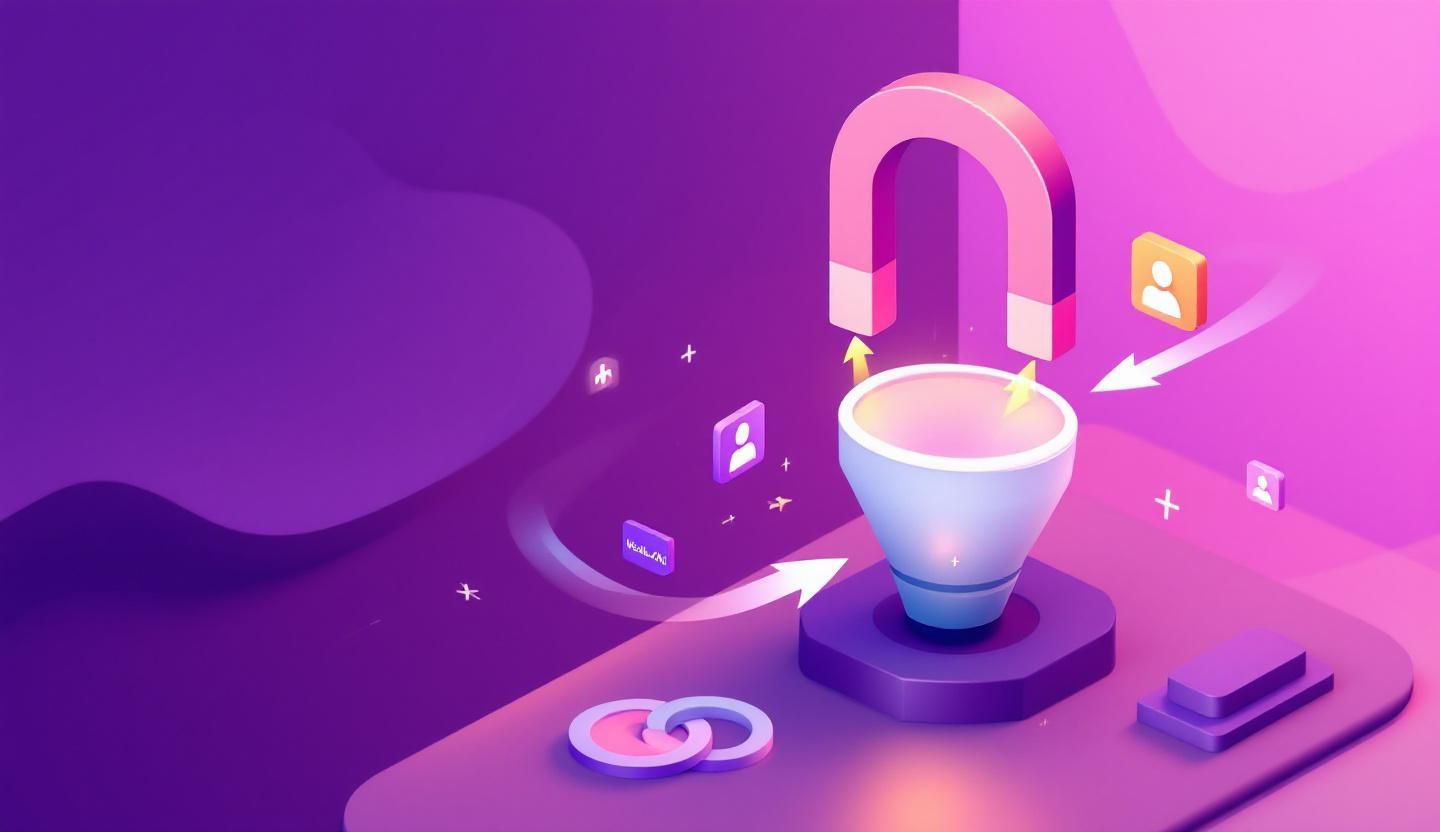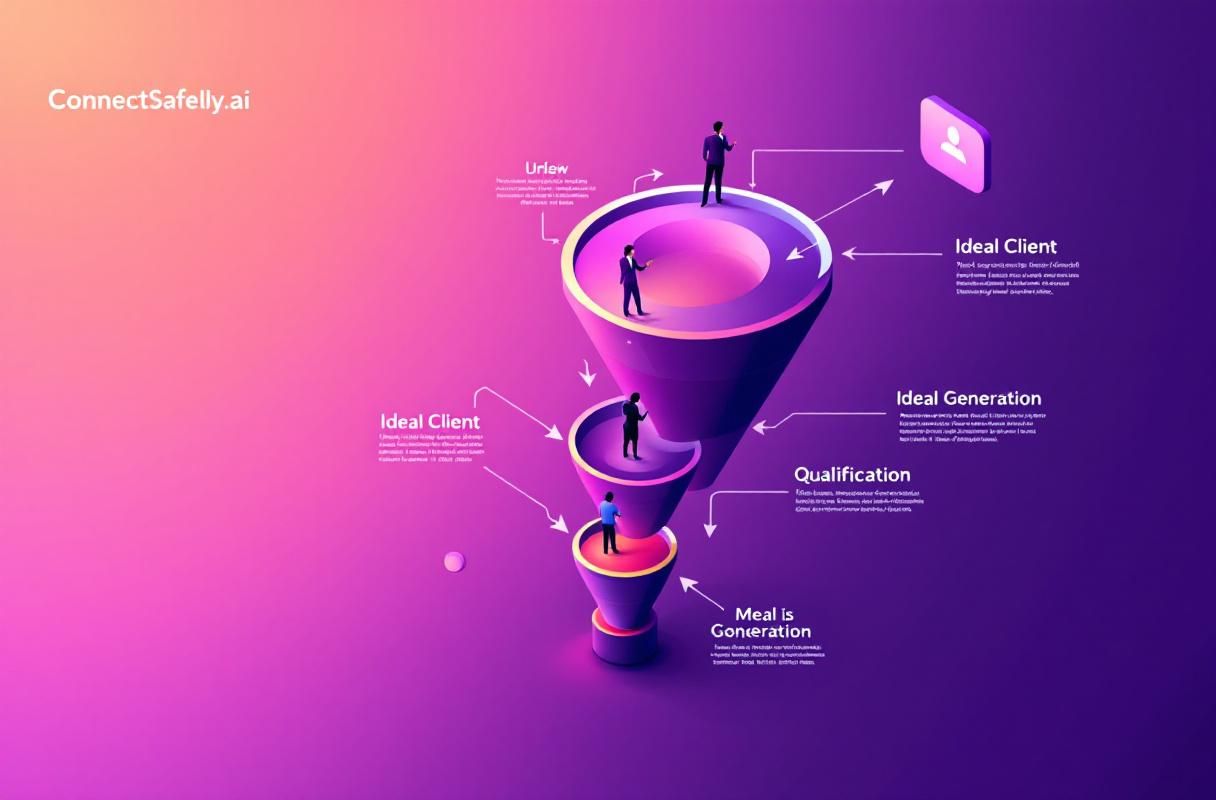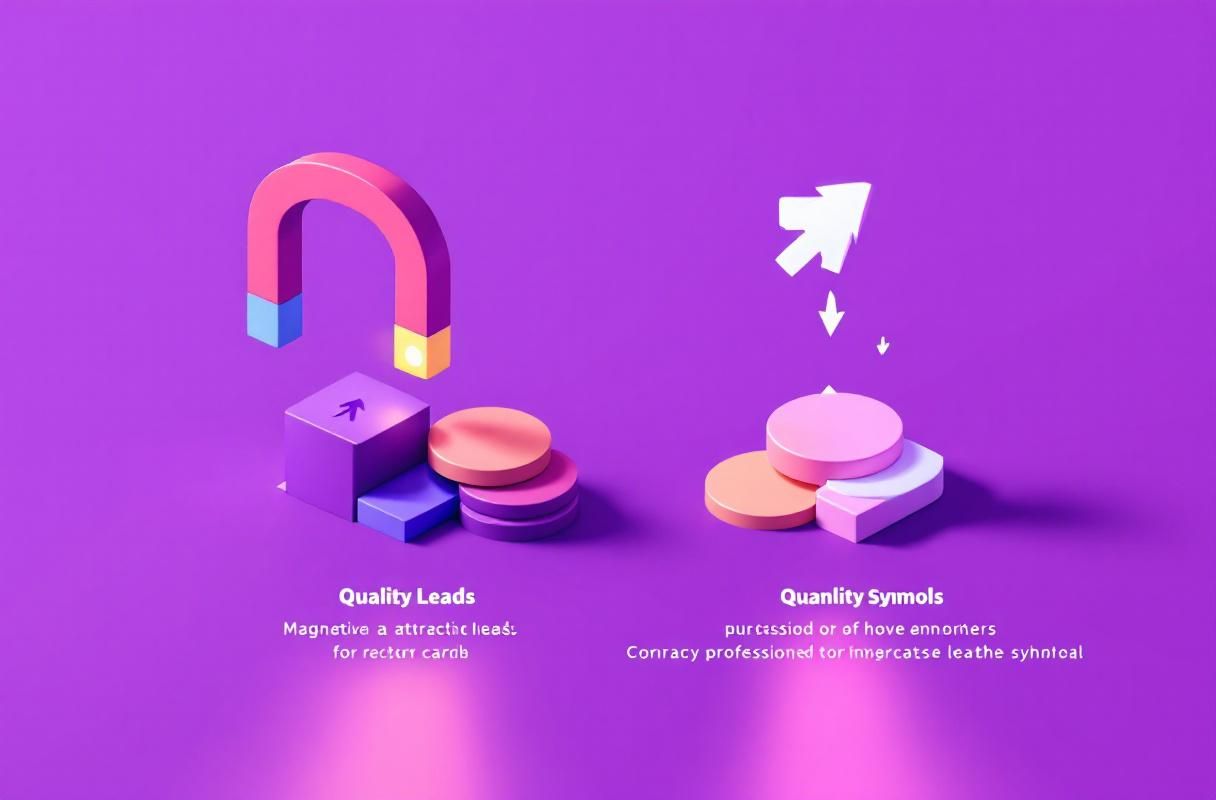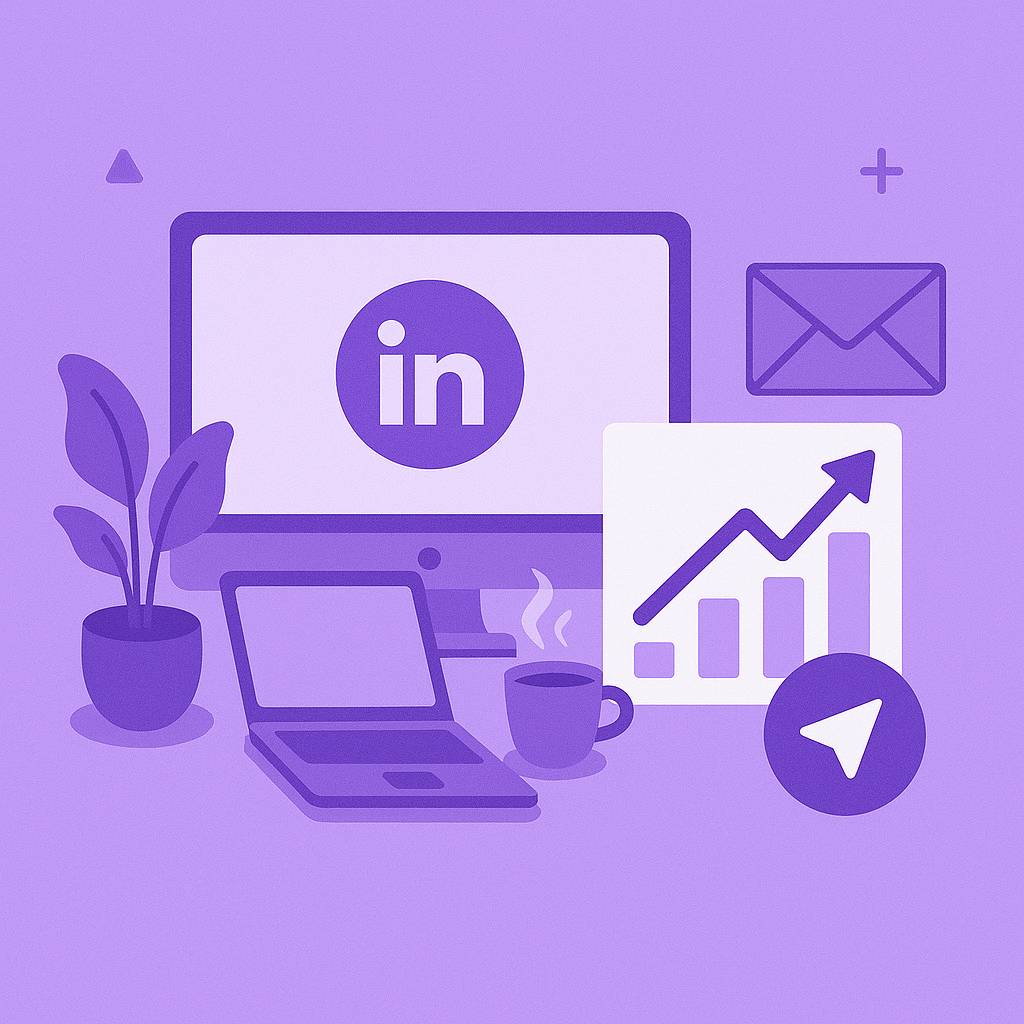Why LinkedIn Inbound Makes Cold Prospecting Emails Obsolete
Stop sending cold prospecting emails that get ignored. Build LinkedIn authority that makes prospects email YOU instead—warmer leads, better results.

Sales professionals have been told for years that prospecting emails are the "backbone of the sales process." Research shows 64% of customers prefer email as a communication channel with sellers, and countless articles promise that perfect templates will unlock floods of qualified leads.
But here's what those articles don't tell you: cold prospecting emails work less effectively every year—while LinkedIn inbound lead generation works better.
The problem isn't that your templates aren't good enough. The problem is that you're playing a volume game in an attention economy that increasingly punishes interruption and rewards expertise.
Meanwhile, a completely different approach is transforming how smart sales professionals fill their pipelines: building LinkedIn authority that makes prospects reach out to YOU via email instead of hoping strangers respond to your cold outreach.
The Uncomfortable Truth About Sales Prospecting Emails
Traditional sales prospecting relies on identifying potential customers, researching their needs, crafting personalized emails, and hoping they respond. The standard playbook includes:
Introduction emails ("I work with sales teams to provide solutions...") Reference-based emails ("I noticed your recent funding...") Competitor targeting ("Looking for a better solution than [tool]?") Follow-up sequences (polite persistence until they respond or ghost)
Research consistently shows this approach faces major headwinds:
The Response Rate Reality
Even highly personalized prospecting emails generate dismal response rates:
- Generic cold emails: 2.6% response rate
- AI-personalized messages: 9.36% response rate
- Best-case scenarios: 15-20% for exceptional targeting + personalization
Translation: Send 100 carefully crafted prospecting emails, celebrate if 10-20 people respond, then realize only 1-2 are actually qualified opportunities.
The Personalization Arms Race
Articles advise: "Make it personal! Reference their company! Mention mutual connections! Compliment their recent success!"
The problem: When everyone personalizes using the same playbook, personalization becomes the new spam. Prospects recognize templated "personalization" immediately:
"I noticed you just got promoted to VP of Sales..." (found via LinkedIn scraping) "Congratulations on your recent funding..." (triggered by press release automation) "I saw your post about [topic]..." (AI-generated engagement attempt)
Recipients aren't stupid. They recognize surface-level research masquerading as genuine interest.
The Volume Trap
When response rates hover around 5-10%, the conventional wisdom says: send more emails.
This creates a vicious cycle:
- Low response rates → need higher volume
- Higher volume → less time for genuine personalization
- Less genuine personalization → lower response rates
- Lower response rates → need even higher volume
Eventually you're sending hundreds of "personalized" emails per week that all feel the same to recipients—because they ARE the same, just with variables swapped.
The Trust Deficit Problem
Cold prospecting emails start from a position of zero trust:
- Prospect doesn't know you
- Prospect didn't ask to hear from you
- Prospect is skeptical of your motives (you're obviously selling something)
- Prospect has received 50 similar emails this month
Every word in your email is evaluated through a lens of skepticism: "What does this person want from me?"
Why "Better Templates" Isn't The Solution
Sales advice focuses obsessively on optimizing prospecting email copy:
Better subject lines ("47% of recipients open based on subject line!") More personalization ("71% prefer personalized emails!") Value-first approaches ("Share research reports and case studies!") Engaging CTAs ("Make it action-driven!")
This is all helpful—if your goal is to optimize a fundamentally flawed strategy.
But optimizing cold prospecting is like improving your VHS rental store in 2025. You can have the best late fees policy in the industry, but you're still solving the wrong problem.
The Fundamental Flaw: You're Still Interrupting
No matter how catchy your subject line or personalized your opening, you're still interrupting someone who didn't ask to hear from you.
Compare these two scenarios:
Scenario A: Cold Prospecting Email
- Prospect receives your email among 100+ daily messages
- Subject line competes with everything else for attention
- They don't know you, don't trust you, don't expect you
- Every claim you make is met with skepticism
- They're immediately evaluating: "Is this worth my time?"
Scenario B: Warm Inbound Inquiry
- Prospect has seen your thoughtful comments on industry topics
- They've consumed your insights, recognize your expertise
- They reach out because they have a need you clearly understand
- Trust is pre-established through visible expertise
- They're asking: "Can you help me with [specific problem]?"
Which conversation would you rather have?
The LinkedIn Inbound Alternative: Make Prospects Email You
Here's the paradigm shift most sales professionals miss: the best prospecting email is the one prospects send to YOU.

When you build visible LinkedIn expertise in your niche, a remarkable transformation happens:
From Cold Outreach to Warm Inbound
Traditional prospecting approach:
- Identify 200 potential prospects
- Research each one (15 minutes per prospect = 50 hours)
- Craft personalized emails referencing their context
- Send emails hoping for 5-10% response rate
- Get 10-20 responses, mostly "not interested"
- Convert 1-2 into actual opportunities
- Time invested: 50+ hours, Result: 1-2 lukewarm opportunities
LinkedIn inbound approach:
- Build expertise visibility in your niche
- Engage strategically in high-value conversations
- Demonstrate knowledge where ideal clients pay attention
- Receive 10-15 inbound connection requests per month from ideal customer profile
- Receive 5-8 inbound DMs or emails: "I've been following your insights..."
- Convert 3-5 into actual opportunities (14.6% close rate vs. 1.7% for cold)
- Time invested: 2 hours per week, Result: 3-5 pre-qualified warm opportunities
The difference: Instead of chasing prospects who don't know you, you attract prospects who've already consumed your expertise and self-identified as interested.
Why Inbound Inquiries Convert Better
When prospects reach out to you after seeing your LinkedIn presence:
They're pre-qualified: They wouldn't reach out if they didn't have a relevant need.
They're pre-educated: They understand your perspective and approach because they've seen your content.
They trust you: Your visible expertise created credibility before the first conversation.
They're ready: They're reaching out because they want to explore working together, not because you interrupted them.
Research backs this up: Inbound leads convert at 14.6% vs. outbound's 1.7%—an 8-9X improvement in close rates.
The Compounding Effect
Cold prospecting delivers linear results: Send 100 emails, get 10 responses. Want 20 responses? Send 200 emails.
LinkedIn authority delivers exponential results: Your 100th strategic comment has more impact than your first because you've built recognition. Month 3 generates 3X more inbound than Month 1 with the same effort.
The result: Your LinkedIn presence becomes an appreciating asset that generates increasing returns, instead of an email hamster wheel requiring constant effort for the same mediocre results.
How to Build LinkedIn Authority That Generates Inbound Email
Here's how to transition from cold prospecting dependence to inbound inquiry abundance:
Step 1: Optimize Your Profile for Inbound Conversion
Your LinkedIn profile needs to convert visitors who discover you through your comments:
Headline transformation:
- ❌ "VP of Sales at [Company]" (describes you, doesn't attract)
- ✅ "Helping B2B SaaS companies scale from $1M to $10M ARR through inbound lead generation" (describes outcome, attracts ideal clients)
Summary transformation:
- ❌ Generic credentials and responsibilities
- ✅ Specific outcomes you deliver + proof points + who you serve
Featured section:
- Showcase your best insights, case studies, or frameworks
- Make it easy for visitors to understand your expertise depth
When prospects discover you through your comments, your profile should compel them to reach out—not require you to chase them.
Step 2: Identify Where Your Ideal Clients Pay Attention
Instead of scraping lists of cold contacts, identify where meaningful conversations happen:
Key questions:
- Which thought leaders do your ideal clients follow?
- What topics generate engagement in your industry?
- Where are decision-makers seeking advice and perspectives?
- Which conversations attract your target audience?
Your goal: become visible in the conversations where prospects already pay attention.
Step 3: Engage With Genuine Expertise
Add value to high-impact conversations through:
Unique frameworks or perspectives: Share approaches prospects haven't seen elsewhere
Specific, actionable insights: Provide value they can implement immediately
Thoughtful questions: Deepen discussion and demonstrate strategic thinking
Data-backed perspectives: Reference experience or research that demonstrates credibility
Critical difference: You're not executing a comment template—you're genuinely participating in professional discourse. Prospects see expertise, not tactics.
Step 4: Let Prospects Come to You
As you build consistent visibility:
Week 1-2: Profile views increase from ideal customer personas Week 3-4: Inbound connection requests from target audience begin Week 5-6: First inbound DMs: "I've been following your insights..." Month 2+: Regular stream of warm inquiries via LinkedIn and email
The beautiful part: These prospects email YOU because they've self-identified as interested. Your "prospecting email" is actually a response to their inquiry—starting from a position of trust instead of skepticism.
Step 5: Make It Efficient Without Losing Authenticity
The challenge: genuine engagement takes time. The solution: smart amplification that maintains authenticity.
Look for tools that:
- Help identify highest-value conversations for your expertise
- Generate thoughtful comments in your voice (not generic templates)
- Stay 100% platform-compliant (engagement, not spam)
- Track inbound metrics (profile views, connection requests, DMs)
Avoid tools that:
- Automate connection requests or cold messages
- Use generic templates that scream "automation"
- Violate platform guidelines
- Prioritize volume over relevance
How ConnectSafely.ai Enables Inbound-Driven Email Success
ConnectSafely.ai was built specifically for this approach—amplifying your LinkedIn expertise so prospects discover you and reach out:
Core value for sales professionals:
1. Strategic Conversation Targeting: Identifies high-value discussions where your ideal clients engage—ensuring your expertise reaches the right audience.
2. AI-Powered Authentic Engagement: Generates thoughtful comments that sound like you because they're based on your expertise and voice—not generic sales templates.
3. Inbound Lead Tracking: Monitor profile views from target accounts, inbound connection requests, and DM volume—proving ROI through attraction instead of interruption.
4. 100% Platform Compliance: Focuses on engagement and value-sharing LinkedIn rewards—no connection spam, no bulk messaging, no Terms of Service violations.
Results for sales professionals:
- Generate 10-20 qualified inbound leads monthly
- Maintain active presence in 30 minutes/week instead of 10+ hours on cold email research
- Convert at 14.6% instead of 1.7% because leads are pre-qualified and warm
- Build authority that compounds—Month 3 delivers 3X Month 1 results with same effort
At $39/month, ConnectSafely.ai costs 96% less than enterprise sales automation tools while delivering 10-32X better ROI through higher-quality warm leads.
Why LinkedIn Inbound + Email Outperforms Cold Prospecting

Let's address the obvious objection: "But I still need to send emails!"
You're absolutely right. Email is still critical. The question is WHEN and to WHOM you send those emails.
The Inbound Email Advantage
Cold prospecting email:
- Sent to stranger who doesn't know you
- Opens with self-introduction and credibility-building
- Every claim met with skepticism
- Prospect evaluates: "Is this worth my time?"
- Response rate: 5-10% if excellent
- Conversion rate: 1.7%
Warm inbound follow-up email:
- Sent to prospect who reached out to you
- Opens with "Thanks for connecting about [their need]"
- Trust pre-established through visible expertise
- Prospect evaluates: "How can they help me?"
- Response rate: 70%+ (they ASKED to hear from you)
- Conversion rate: 14.6%
Same channel (email), radically different results because you're communicating with warm prospects instead of interrupting cold ones.
The Multi-Touch Strategy
LinkedIn inbound doesn't eliminate email—it makes email dramatically more effective:
Month 1: Build LinkedIn visibility through strategic engagement Month 2: Prospects discover you, connect, begin following Month 3: Prospects reach out via LinkedIn DM or email when they have a need Your response: Professional email continuing the warm conversation
The result: Your emails are responses to warm inquiries instead of cold interruptions—transforming email from a low-probability interruption tool into a high-probability relationship-building channel.
Key Takeaways
- Cold prospecting emails face declining effectiveness: Response rates of 5-10% continue dropping as prospects receive more sales outreach and develop pattern recognition for generic personalization
- LinkedIn inbound eliminates the trust barrier: Prospects who discover your expertise and reach out start from position of interest instead of skepticism—converting at 14.6% vs. 1.7%
- Better templates don't solve the fundamental problem: Optimizing cold prospecting is like improving a VHS rental store—you're still interrupting people who didn't ask to hear from you
- Inbound leads save massive time: 50+ hours researching and sending cold emails for 1-2 opportunities vs. 8 hours/month of strategic engagement for 3-5 pre-qualified warm leads
- Email works better when paired with LinkedIn authority: Same channel (email), radically different results when you're responding to warm inquiries instead of cold interrupting strangers
The future of B2B sales belongs to professionals who build expertise that attracts instead of deploying templates that interrupt.
Ready to stop sending cold prospecting emails that get ignored and start receiving warm inquiries? Start with ConnectSafely.ai and transform LinkedIn into your inbound lead generation engine.
Stop prospecting. Start attracting.
